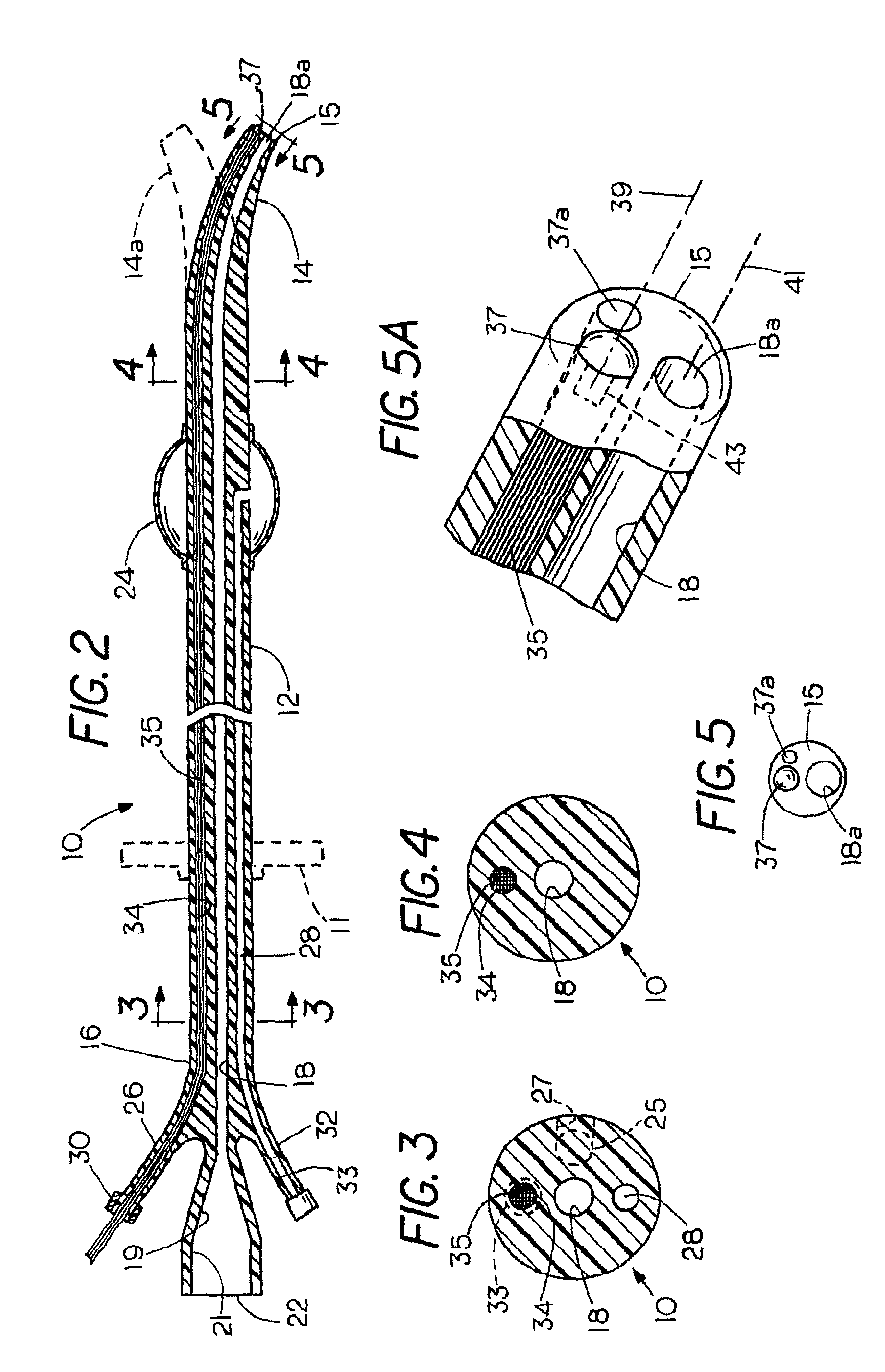Flexible visually directed medical intubation instrument and method
a visual directed, medical intubation technology, applied in the field of medical instruments, can solve the problems of urethral obstruction, burden on the delivery of effective care through the healthcare system, and difficulty in more than forty percent of male urinary catheter placement, and achieve the effect of reducing the cost of the instrumen
- Summary
- Abstract
- Description
- Claims
- Application Information
AI Technical Summary
Benefits of technology
Problems solved by technology
Method used
Image
Examples
Embodiment Construction
[0047]Refer now to the FIGS. 1-29 wherein the same numerals refer to corresponding parts in the several views. The invention will be described by way of examples, all of which are intended for illustration only and not for limitation, which illustrate a visually directed intubation instrument in accordance with the invention that can be placed into the body of the patient under direct and continuous visual control in any of a variety of different surgical specialties. The invention is especially versatile and can be dimensioned and configured for use in urology, in gastroenterology, and in other surgical fields. The various embodiments illustrate the versatility of the invention since it can be employed as a drain or for exploratory purposes as well as a working channel to be used during a surgical operation or even in the field of gastroenterology as a feeding tube.
[0048]In certain embodiments, the instrument 10 comprises a flexible catheter 12 formed from natural or synthetic rubb...
PUM
 Login to View More
Login to View More Abstract
Description
Claims
Application Information
 Login to View More
Login to View More - R&D
- Intellectual Property
- Life Sciences
- Materials
- Tech Scout
- Unparalleled Data Quality
- Higher Quality Content
- 60% Fewer Hallucinations
Browse by: Latest US Patents, China's latest patents, Technical Efficacy Thesaurus, Application Domain, Technology Topic, Popular Technical Reports.
© 2025 PatSnap. All rights reserved.Legal|Privacy policy|Modern Slavery Act Transparency Statement|Sitemap|About US| Contact US: help@patsnap.com



